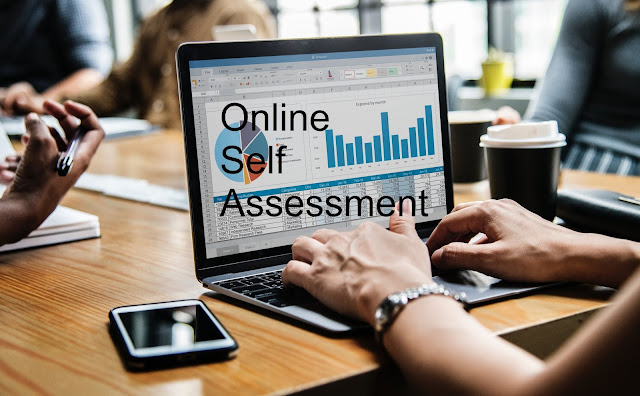Online Self Assessment (OSA) : Getting it Right First Time
Online Self Assessment
The Second and Most Important Step
This article is intended at providing insights on how to complete Online Self Assessment (OSA) which is the first and most critical stage of ZED Certification process. We will discuss common mistakes made at this stage, the Steps involved in OSA, and Action Planning.*
*Please read the Disclaimer at the bottom of the page before applying these inputs.
About Online Self Assessment
As is evident, this is your own assessment of where you stand on the various ZED parameters and is done online. The ZED portal allows 3 Final Submissions of Online Self Assessment. You can use these attempts in a way that helps you measure how close you are to achieving ZED rating and implement actions to address Gaps.
There are 3 important Steps in OSA
Step 1. Selecting Optional Parameters.
Step 2: Self Assessment for each parameter.
Step 3: Review & Submit OSA.
Common mistakes in OSA
1. Selecting wrong Optional parameters
If you do not have any Environment Protection System, you should not select Preventive Maintenance of Environment Management systems as an optional Parameter.
2. Misunderstanding Parameters
Low Cost Automation means automation done inhouse to improve productivity. Purchasing Automated machines from outside is covered under a different parameter (Technology Upgradation).
3. Overrating
It is very important to understand that OSA must reflect the actual onground situation. There is nothing to be gained by scoring oneself higher than what is currently in place because Evidence requirements are quite stringent in ZED Certification. It can happen due to lack of understanding the parameters (especially Waste Management which is the most misunderstood Parameter and is covered in a previous article).
Key Points to Note
- Self Assessment must be very realistic and match the current state of your organization.
- Select all Optional Parameters applicable to your organization - at least 15.
- After completing responses calculate average Score for each Optional parameter and Identify Top 10 Optional Parameters.
- When calculating scores remember : Option 1 has a a score of 0 while other options have the same score as the Option Number (e.g. Option 2 score is 2, Option 3 score is 3 and so on).
- Your calculation of Parameter score will not match the System score because ZED scoring uses a weighted average algorithm instead of Straight Averages.
- If your Self Calculated Average score on 30 Parameters (20 Mandatory plus Top 10 Optional ) is 2.5 or higher go for Desktop Assessment otherwise go for Action Planning. Include scores of only the Top 10 Optional parameters for taking this decision.
- Once you click “Final Submit” you cannot change the Optional Parameters for Desktop Assessment.
- If you have selected more than 10 Optional Parameters, you can ask for the extra parameters to be dropped at the time of Site Assessment.
- If you select only 10 Optional Parameters
- You cannot make any change after Submitting the Assessment (unless you re-do the OSA from scratch again).
- If you apply for Desktop Assessment with 10 Optional Parameters, you cannot change the Optional parameters at any stage later. I have seen a Company go for Site Assessment with a Parameter that had a 0 score.
Step 1. Selecting Optional Parameters.
- 20 Parameters will be pre selected as "Mandatory" basis your NIC Code and Pollution Category. You cannot change these.
- Of the balance 30 Parameters you can select as many as you like but you are required to select at least 10 Optional Parameters to go to Stage 2 of OSA.
- I recommend selecting as many as you can – but not less than 15.
- Select all Parameters which apply to you – do not exclude any parameter unless you are very sure that it does not apply to you.
- The only parameters I can think for excluding at this stage are given in a table below.
Step 1A. To Select Optional Parameters - first click on the Tab "Optional Parameters" and click on the small circle below each Parameter.
Note: Select at least 15 Optional Parameters at this stage. 20 is ideal.
Once you have selected all possible Optional parameters - click on “Proceed” Button to start the Self Assessment. The "Proceed" button will work only after you have selected 10 Optional Parameters.
Step 2: Self Assessment for each parameter.
On clicking "Proceed" after selecting 10 (or more) Optional Parameters, you can start Assessing each Parameter.
Step 2A. Click on "Assess Now" or "In Progress" below each parameter to open the questions associated with it. Each parameter can have anywhere between 1 to 5 questions.
Step 2B. For every question that opens select the option that "BEST REPRESENTS" your Current State - which you can back up with evidence.
- Each question has five Options. Select the Option that best represents your Organization’s Current State. Even if it is Option 1 (score=0), do not select a higher option unless you can provide evidence to justify a higher option within 30 days. Note it under “Selected Option” Column as shown in table below.
- Identify the Highest Option that you can achieve / implement in the next 12 months – Note this as your “Target Option”. Do not click on this Option – only note it as shown in table below.
- Click "Submit" to go the next Question.
- Note the Selected Option and Target Option alongwith Parameter Name and Question in an Excel format as shown below. This is critical to moving forward. Score each Option basis the Option Number (0 for Option 1, 2 for Option 2, 3 for Option 3, 4 for Option 4 and 5 for Option 5).
Complete answering all questions to all parameters till you can see “Parameter Assessed” under each Parameter (Mandatory & Optional).
- Once all Parameters are answered - calculate Parameter Score as follows: Estimated Parameter Score = Sum of Score of all statements in the Parameter / No. of statements in the Parameter. In the example given above Current Estimated Parameter Score = [3+2=0+0]/4 = 1.25 and Estimated Target Parameter Score = [5+4+3+3]/4=3.75.
- Calculate Overall Estimated Average Score using the Formula [Sum of Parameter Scores] / No. of Parameters
- Remember : Your self calculated score will not match the actual score as calculated by the ZED Portal system.
Stage 3: Review & Submit OSA.
Once you have answered all questions of all Parameters (Mandatory + Selected Optional Parameters) you can review your responses and decide whether to submit your Score for generating Official Online Self Assessment report or work on implementing actions to improve your Process Maturity instead.
- Since you get only 3 chances to Submit OSA - do not click “Final Submit” unless your Estimated Average Overall Score is more than 2.5.
- Remember : Your self calculated score will not match the actual score as calculated by the ZED Portal system.
- If Estimated Average Overall Score is more than 2.5, click “Final Submit” and await the System Generated Official OSA Report. It will come to you on your registered email id from zed@qcin.org and will also show the evidences required to be submitted.
- If Overall Average score is less than 2.5, do not click on “Final Submit” and proceed with Action Planning instead.
Action Planning
This will deliver greatest value to your business if you have done a very realistic Self Assessment and are willing to invest time and resources for enhancing the maturity of your business.
Key Steps
The target of Action Planning should be:
For any further queries or Consulting Support you can reach us at:
Email: ZED.Consulting.IN@Gmail.com
WhatsappWeb: https://wa.me/919871902031
Disclaimer & Indemnity:
This will deliver greatest value to your business if you have done a very realistic Self Assessment and are willing to invest time and resources for enhancing the maturity of your business.
Key Steps
- Identify Core Parameters: These are your Top 10 Optional Parameters and the 20 Mandatory Parameters. These should be the focus of your Action Planning.
- From these Core Parameters select all Statements where your Target score is less than Current Score. These are your "Key Gap Areas".
- Define a clear Action Plan for each Gap Area - What will be done, by Who and by When.
- Put a review mechanism in place - Monthly Top Leadership reviews of Progress against Plan.
The target of Action Planning should be:
- Obtaining an average score of 3 or more on any 20 Parameters out the 30 Core Parameters).
- Obtaining an average score of 1.5 or more on the balance 10 Core Parameters.
- Obtaining an average score of 3 or more on any 15 Parameters out the 30 Core Parameters).
- Obtaining an average score of 2 or more on the balance 15 Core Parameters.
You can look forward to more articles for helping you in your journey towards ZED Certification and beyond. Keep checking this blog for updates orclick on the "Subscribe" button to be notified of a new article as and when it is published.
Email: ZED.Consulting.IN@Gmail.com
WhatsappWeb: https://wa.me/919871902031
Disclaimer & Indemnity:
- Views expressed herein do not represent the Official Guidelines & practices and may not be in line with the latest changes or updates in the same.
- The Official Guidelines & practices are dynamic and hence it is highly recommended that Users obtain & use the prevailing Official Guidelines/Policy issued by Quality Council of India (QCI) from time to time.
- Please use your judgment and discretion before using these inputs. The Author assumes no responsibility for any loss or damage you may incur by using this content.
- By using these inputs, for any purpose whatsoever, you indemnify the author and his firms of any & all liability for any loss/damage you may incur by applying these inputs and you also undertake not to bring forth any legal proceedings for the same.
- In the event that you use any or all of these inputs for any purposes whatever, you also accord your consent that the appropriate Courts in Union Territory of Chandigarh, India have sole jurisdiction for hearing / resolving any dispute or claims with regard to the content of this article.







Good information .
ReplyDeleteZed certification consultants in Chennai
very useful information.
ReplyDeletevda 6.3 certification bodies Chennai
This is a great post, Thanks for sharing the information about self assessment test. Self assessment and personality test to help users determine their professional personalities, strengths, and weaknesses. I used personality assessment software that helped me to choose the right path.
ReplyDeleteAny Query About Self Assessment Tax Return Online Click here: Visit W3Schools
ReplyDelete